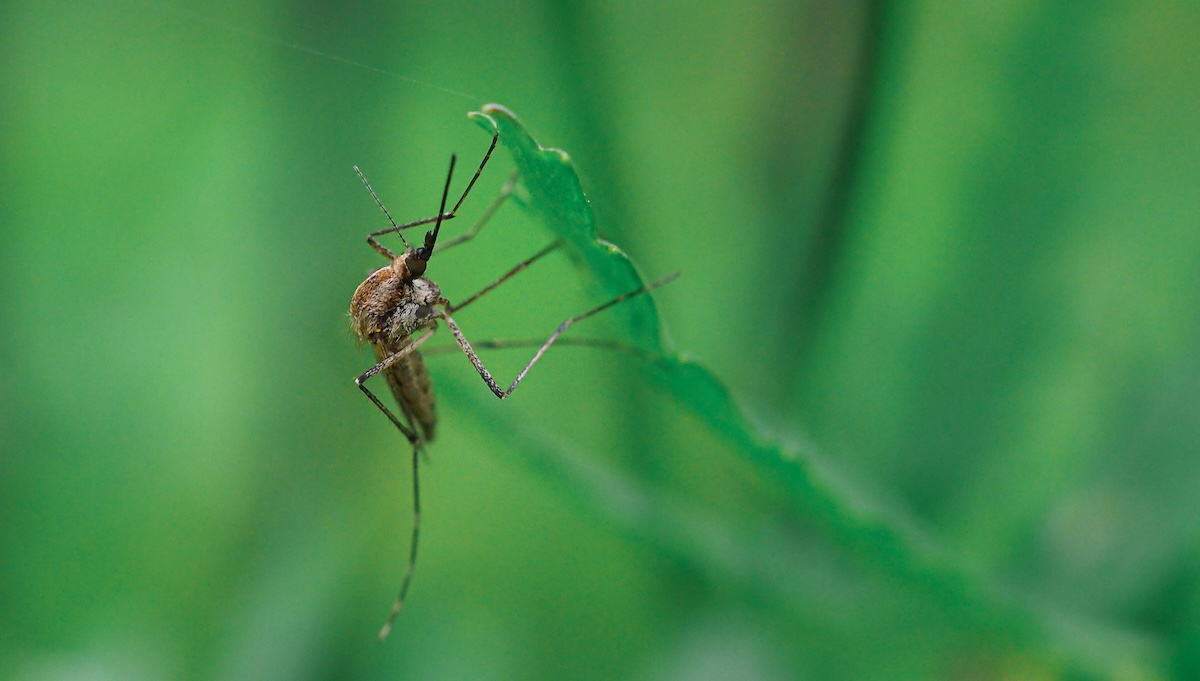We don’t have to tell you how irritating mosquitoes can be, or how important knowing how to deal with them around ponds and dams is. As well as being a nuisance, they can pose a serious health risk.
Large ponds and dams are exactly what mosquitoes are looking for to breed in, which often makes the task of dealing with them challenging. That said, there are ways to turn your water body into a less than ideal habitat for them.
In this blog, we’re looking at how to tackle the issue of mosquitoes around ponds and dams. We’ll explore the effects of the different seasons and the best tips on removing these pests altogether.
Why Ponds and Dams Are Ideal for Mosquitoes
In ponds and dams, water often lacks a lot of movement and creates the conditions that mosquitoes love so much. In this still water, mosquitoes lay their eggs directly on top of it or along the edges and within a few days, these eggs hatch. Quickly, they grow into adults.
Large ponds and dams often have small patches of stagnant water. And this can be the case even if the main body looks healthy. These small areas can quickly produce thousands of mosquitoes, so water managers need to stay alert.
How Seasons Affect Mosquito Numbers
You have likely noticed that different seasons of the year have an impact on the amount of mosquitos you’ll come across. The good thing about knowing this, is that you can tackle each season as it comes.
Spring: The Breeding Kick-Off
Temperatures tend to rise and rainfall increases in spring. This is typically when mosquitoes begin their breeding season.
- In puddles and along the edges of shallow ponds, eggs hatch quickly.
- They start seeking their first blood meals as adult mosquitoes emerge.
Takeaway:
Spring is the time to act early. Population explosions can be reduced later by making sure to move and mix stagnant water in this season.
Summer: Peak Mosquito Season
You’ll probably see the most mosquitoes in summer when the weather is very hot and humid. Their breeding cycle can speed up and take as little as 7 to 10 days from egg to adult. Summer is the season when their populations boom if water is not well managed.
- Mosquito numbers are at their highest.
- The risk of disease transmission is greatest.
Takeaway:
Preventive measures (aeration, predators, traps) need to be in full swing.
Autumn: Slowing Down, But Still Active
In autumn, the temperature gets a bit cooler and the days are shorter, and you can expect to see a lot fewer mosquitoes. There might still be some still lingering, especially in more northern Australian areas, but there will be a reduction.
- Females still lay eggs in sheltered areas.
- Some species prepare for winter dormancy.
Takeaway:
Don’t let your guard down. Pockets of stagnant water can still support breeding by late-season mosquitoes.
Winter: Dormant or Low-Level Activity
Mosquito activity almost disappears in cooler regions during winter. But in warm or tropical areas, some species continue at low levels.
- Cold climates: mosquitoes die off or enter dormancy.
- Warm climates: larvae may survive in non-freezing water.
Takeaway:
Inspect your pond or dam for standing water in winter, as it could restart the cycle in spring.
How Mosquitoes Return Each Spring
You might be wondering how mosquitoes return each spring after the winter cold encourages them to go out of sight. Despite many dying in winter, mosquitoes do not disappear completely. Clever survival strategies help different mosquito species get through the winter and reemerge in spring.
Here are some ways they manage to return every spring:
Overwintering Eggs
Species like Aedes mosquitoes lay hardy eggs that survive dry conditions and freezing temperatures. These eggs hatch straight away when it rains during spring. Therefore, there is a sudden increase in the amount of mosquitoes, starting the cycle again.
Hibernating Adult Females
Some species, like Culex mosquitoes (native to Australia), overwinter as fertilised females. They hide in sheltered spots, like basements and animal burrows, until warm weather wakes them up. Then they feed and lay eggs in standing water.
Aquatic Larvae in Warmer Regions
In mild climates, larvae can slowly develop through winter and become adults in early spring.
How to Prevent Mosquitoes: Our Top Tips
We all aim to prevent mosquitoes, but how can it be done?
Here are some of our top tips:
Eliminate Stagnant Water
Mosquitoes need still water to breed, and they thrive there. While it’s unreasonable to completely drain a pond or dam, you can manage the smaller pockets that mosquitoes love.
- Aeration systems: Keep water moving and oxygenated, making it less suitable for larvae. Whether you opt for a sub-surface or surface level aeration system, it works great at keeping the water moving and oxygen circulating. Be sure to aerate all areas of your water body including coves and inlets.
- Land grading: Prevent puddles forming around shorelines.
- Bank maintenance: Clear silt, leaves, and debris where water can collect.
Aerators help control mosquitoes and improve water quality, making them one of the best long-term solutions. Check out our collection and eliminate still water altogether.
Improve Water Ecosystem and Health
Encouraging a healthy water body results in a diverse population of micro and macro invertebrates (water bugs) that feed on mosquito larvae and keep their numbers under control. If you see lots of different types of water bugs you’re generally in good shape. If you only see things like occasional water boatmen, blood worms, or worse, leaches, then you need to improve the overall health of your dam.
Here are some ways to improve your water health:
- Aeration: adds more oxygen to the water allowing diverse species to thrive.
- Biostim (Probiotics): ramps up populations of “good” aerobic bacteria, the backbone of a healthy aquatic food chain.
- Diverse planting: this provides shelter for a wide range of aquatic life.
- Keeping weeds and algae in check: to prevent these pests dominating the water and driving other organisms out.
Introduce Natural Predators
Encouraging natural predators is a sustainable and eco-friendly method of getting rid of mosquitoes.
Some good options are:
- Small native fish like rainbow fish and pygmy perch: Eat larvae.
- Dragonflies: Both larvae (underwater) and adults eat mosquitoes.
- Birds & bats: These natural hunters are attracted when their habitats are provided.
- Guinea fowl: Insect-eating birds that happily feed on mosquitoes.
- Frogs & tadpoles: Natural consumers of mosquito larvae.
Install Physical Barriers & Traps
Physical and electronic devices can make a noticeable difference, particularly in public or recreational areas.
- CO₂ mosquito traps: Mimic human breath to lure mosquitoes.
- UV light zappers: Attract and kill night-flying insects.
- Fans in shelters: Mosquitoes are weak fliers, so moving air can keep them away.
Maintain Vegetation & Landscaping
Overgrown vegetation creates cool, moist habitats mosquitoes love.
- Trim weeds and tall grass along shorelines.
- Replace dense grass with gravel or mulch to discourage puddles.
- Plant mosquito-repelling plants such as citronella or lavender.
Monitor Nearby Waterbodies
Certain mosquito breeds can travel up to 5 km, and so they might not even be coming from your body of water. If your water looks fine, the mosquitoes might be coming from somewhere else.
- Nearby lakes or ponds could be the source if you see lots of mosquitoes.
- Encourage neighbours or local councils to use similar mosquito control measures.
Use Larvicides (But Only in Extreme Cases)
Targeted larvicides may be needed when mosquito populations pose a risk to public health.
- Bacillus thuringiensis israelensis (Bti) kills mosquito larvae while having little effect on fish or mammals.
- Best results are when you use it in the early morning or late afternoon.
- Keep an eye on frogs and dragonflies and make sure not to harm them.
Note: Chemicals should always be a last resort. Try using biological and physical methods first before you go for the chemicals.
Final Thoughts
Now you know how to get rid of mosquitoes, you can put measures in place to keep it this way all year round. As we’ve made it clear, we highly recommend aeration as it stops water from staying still and ruins the conditions mosquitoes need to breed.
Our collection of aerators are equipped for demanding conditions and are high-quality, ready to meet your needs. Take a look at our aerator collection or get in touch with us for FREE expert advice on the best ways to manage mosquitoes in your water body.

